Instruction
The Wedge Guy: Taming the wind
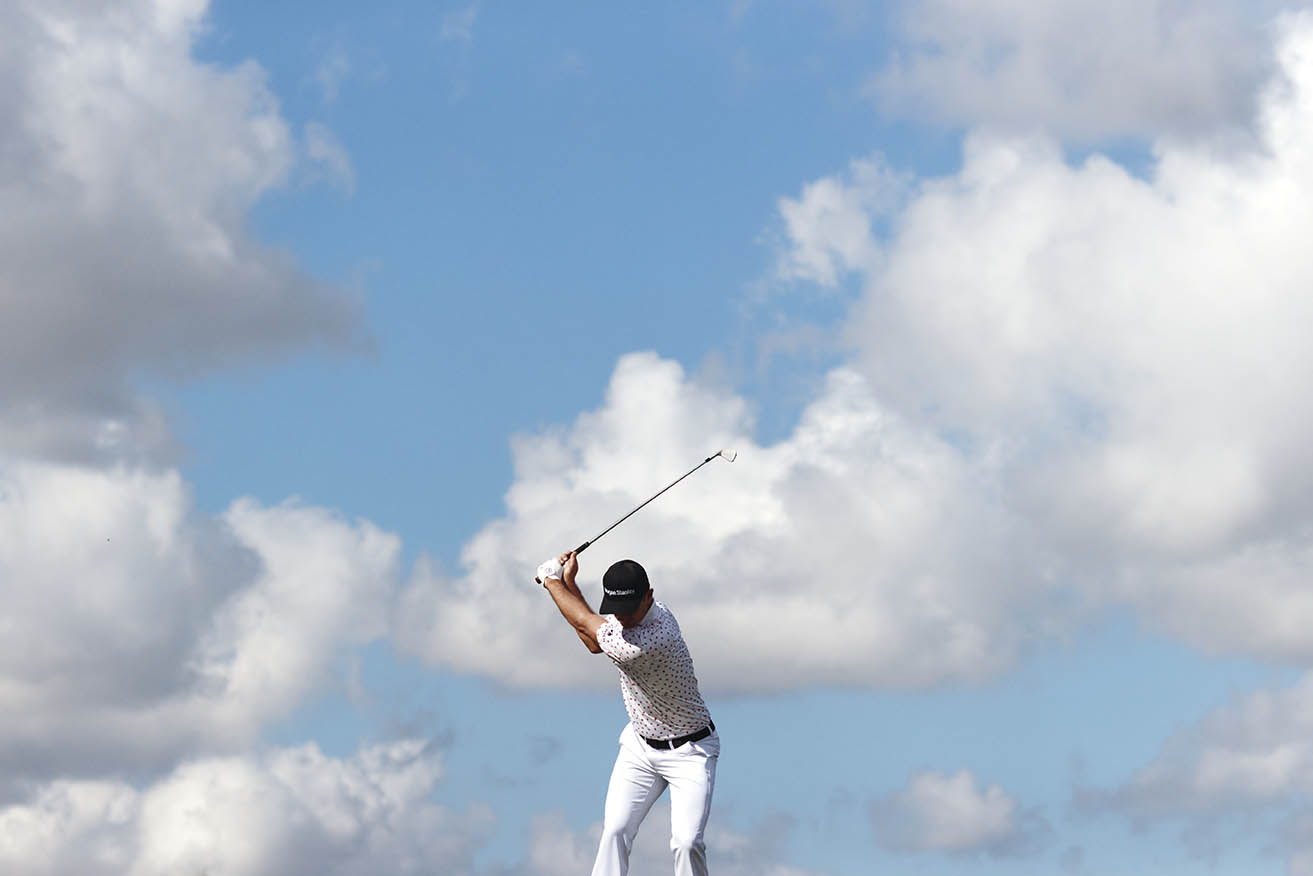
The recent Players Championship fully illustrated the effect the wind can have on scoring, and even the tour professionals found ways to shoot in the high 70s or even 80s when the wind hit its peak on Saturday. On those rare occasions when these elite players have to negotiate strong and gusty winds, you just don’t see scores in the mid-to-low-60s like you do when greens are soft and flags are drooping.
I grew up down here close to the Texas Coast, so I learned to play the wind at an early age. My dad’s guidance was always “when it’s breezy, swing it easy.” And one of my favorite Scottish sayings is “if there be naye wind laddie, there be naye golf”.
A lot of The Players’ TV coverage was focused on No. 17, where so many of these players found the water. Understand that 17 green is one of the largest on the course, so what amazed me is how many of these tour professionals did not know how (apparently) to flight the ball down and control spin in those conditions. As I watched the carnage, I was amazed at how many of these players would apparently just club up and hit their normal towering short iron, with trajectory peaking at 90, 100 feet or more. I read that something like 80 percent of the balls in the water were on shots hit more than 70 feet high.
Puzzling, to say the least.
Today, I want to share the basics of wind play, as I was taught from early in my golf life. The first rule on a windy day is that you have to relax your expectations. As the PGA Tour players showed us, there is no tougher condition than wind in which to play this game.
Besides relaxing your expectations, however, there are some other basics you should understand in order to score better when it’s breezy. And the first is that the wind doesn’t affect a solidly hit ball nearly as much as one that is hit off center. Regardless of the shot you face, if you will throttle back your swing to 75-85 percent when playing the wind, your results will be much better.
Another tip for playing in the wind is to understand that it exaggerates everything. A gentle breeze to light crosswind will hardly affect a straight shot that is hit well. But if that ball flight has curvature to it, the wind will do crazy things. Curve it into the wind, and it will get “knocked down”, probably a club or more short. Curve it with the wind, and the curve will be exaggerated by a factor of 2-3 or more. A gentle draw becomes a sweeping hook, a slight fade a runaway slice.
With it blowing in your face, the goal is to keep the shot “under the wind.” To hit that shot, I play the ball a bit further back in my stance, typically take two more clubs than normal and grip down an extra half inch or so. My single swing thought it to keep is slow and make sure I lead with my body core and arms, so that the clubhead is the last thing through the impact zone.
Also, with this shot into the wind, I want to make a more sweeping motion, rather than a severe downward strike. The key is to minimize spin and height on the shot and these fundamentals help insure that.
Conversely, hitting downwind, Ben Hogan said you always want to over-club as well. A shot hit with less spin is less likely to get up and ride the wind clean over the green or get “knocked down” by the tailwind and come up short. In my opinion, gauging distance of iron shots downwind is always tougher than into the wind.
So, there are my wind-play basics. I hope all of you have the good fortune to put these into play this season. Golf become a very different game when you add a nice 15-20 mph breeze to the equation!
- LIKE52
- LEGIT9
- WOW1
- LOL4
- IDHT3
- FLOP1
- OB1
- SHANK4
Instruction
Kelley: How the concept of a punching motion can change your golf swing
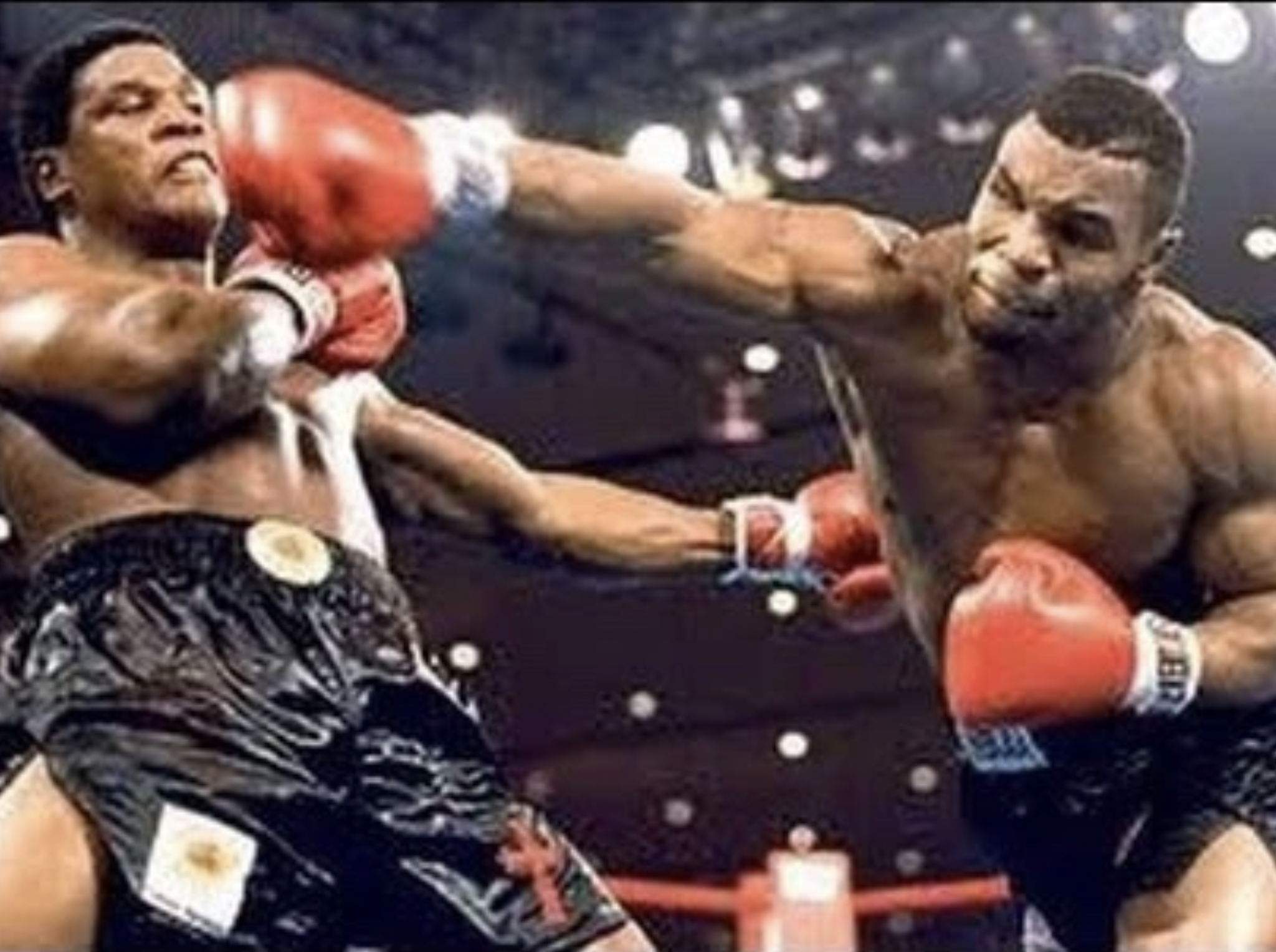
Ever wonder how a simple looking golf swing can produce so much speed and power? The answer may lie in the biomechanics of throwing a punch.
Below is an image of a boxer throwing a right handed hook. Note the direction the body moves to produce maximum force towards the target.

As the boxer pulls back his arm, there is not an excess wind-up or big turn to create power. His body is now geared to go forward and around into the opponent. His body would stay mostly level throughout the motion.
Now lets apply this simple concept to the golf swing. At address, the player would have his upper body and mass positioned behind the ball. In the picture below, note the green line indicting his mass back behind the blue baseline over the ball.
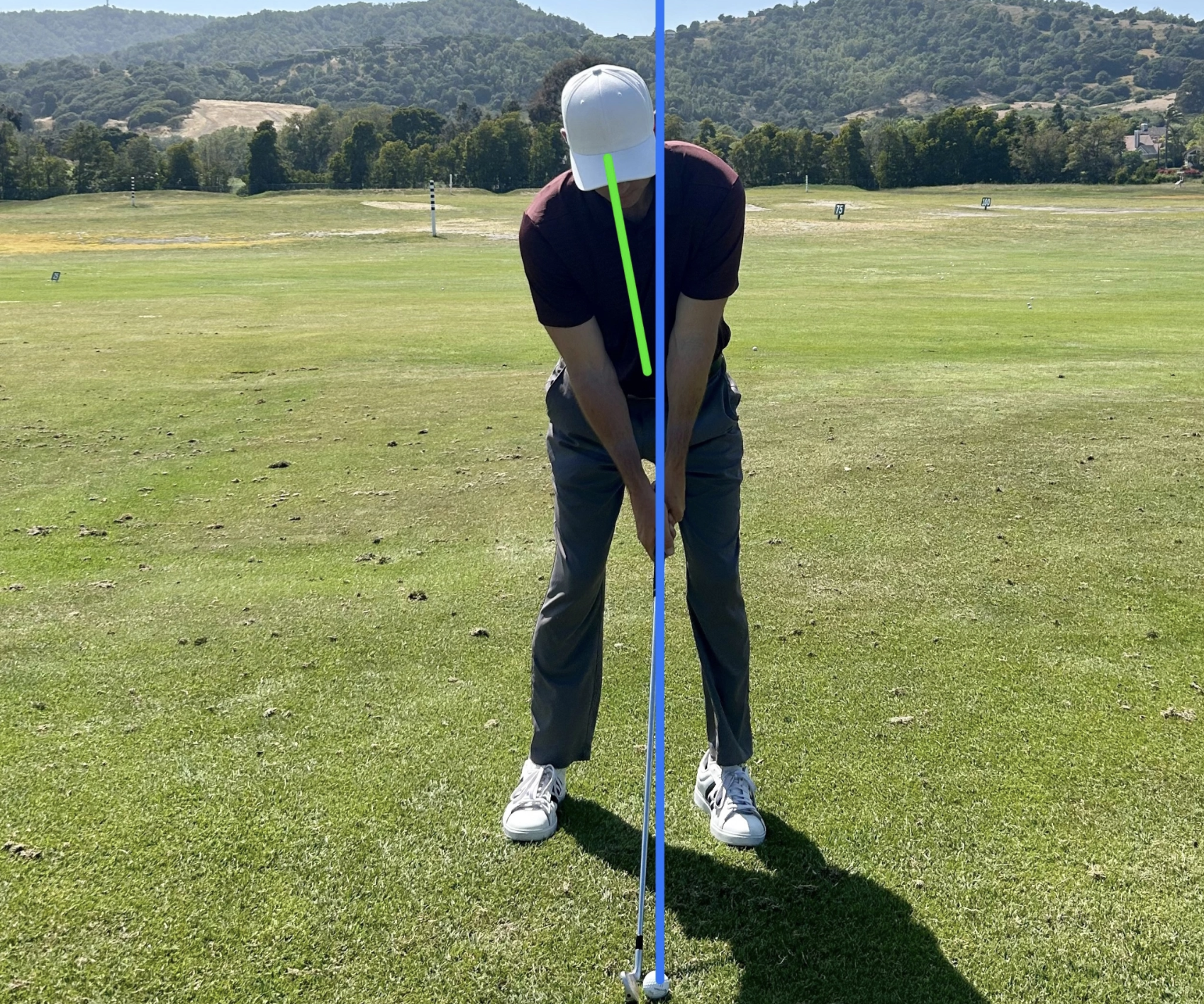
From here, the player can coil around his center, much like a boxer positioned ready to punch.

Now the body can go forward and around towards the target, pulled by the arms. Note the body finishing ahead of the blue baseline.

A body that has a lot of left side bend or “tilt” in the backswing, will naturally counterbalance in the downswing. This will often result with the upper body falling back in the downswing. (Pictured below)
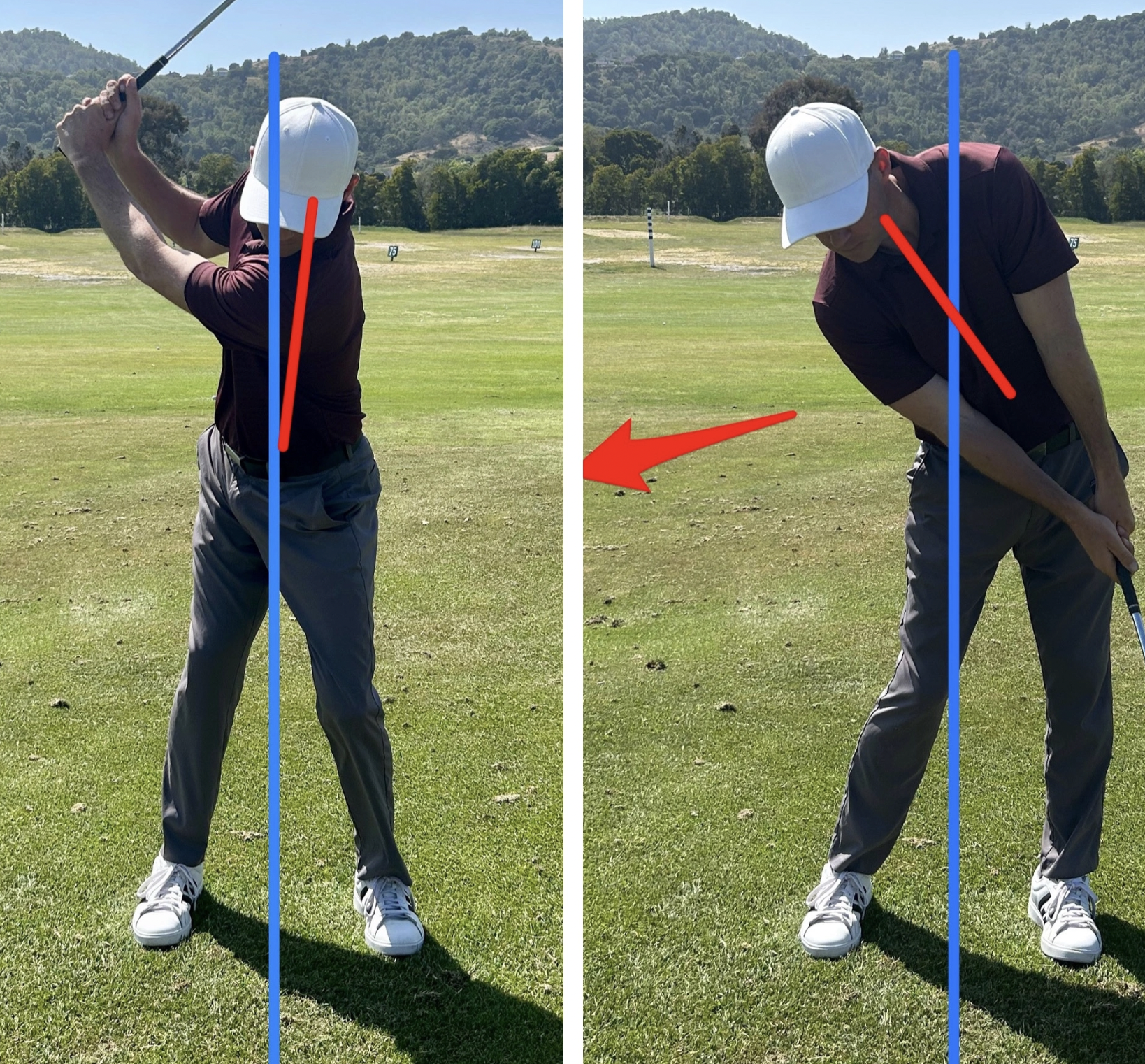
The pattern above would equivalent to attempting to punch forward with your arm while your body is moving backwards. Next time you are looking to make a swing change, first check the movement of your body, and see if it is as simple as boxer throwing a powerful punch.
Twitter: KKelley_golf
- LIKE23
- LEGIT7
- WOW0
- LOL0
- IDHT2
- FLOP0
- OB0
- SHANK7
Instruction
How to set up to the golf ball: Why grip, grip pressure, and posture are crucial
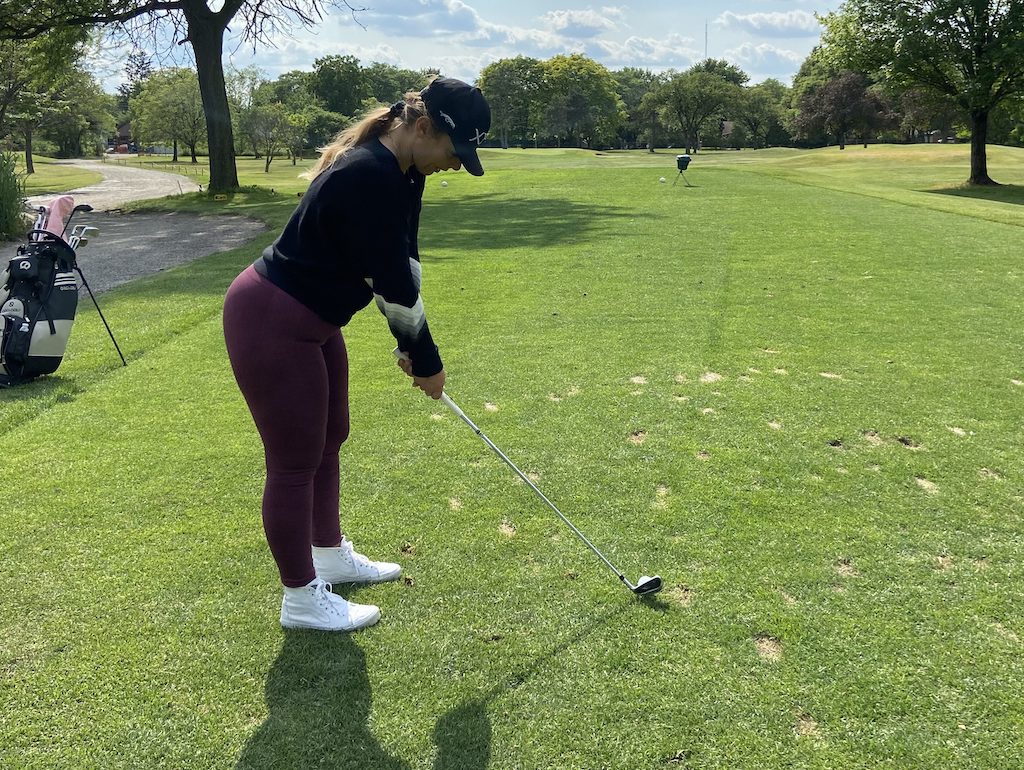
When we are playing a round or hitting balls on the range over a long period of time, we tend to grip the club tighter, stand up, and quickly lose the ability to maintain posture during the golf swing.
As players, with the spine angle out of posture, we overcompensate in many ways. The first thing that many players do poorly, as a result of poor posture, is grip tighter and stiffen the arms. These are the two biggest culprits that will inhibit consistency and any innate ability to set up well and brush the grass. Gripping tighter also leads to poor use of the body’s bigger muscles ie. the core. The spine angle in good posture will activate the core regions and enhance the body’s ability to coil, thus allowing the transfer of weight from the trail to the lead side.
In the quest to better ball striking, our first priority is understanding the importance of grip strength and grip pressure. Our second priority is posture and always initiating the proper spine angle by bowing forward from the hip (pelvic tilt) and letting the arms hang. After positioning the spine angle, check the body’s alignment )ie. shoulders, hips, knees, and feet) by positioning them parallel to the target line. This process composes the beloved and all-important set up.
How to set up to the golf ball: The basics
Our ability to set up and control grip pressure is the source of our ability to play well and consistently over time.


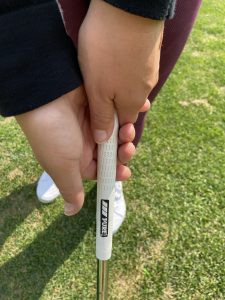
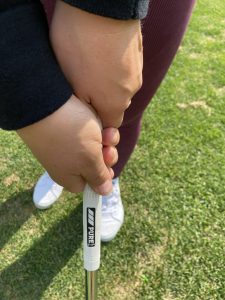
The first essential step is setting the grip in the lead hand
The main pressure points to focus on in gripping with the lead hand are, first and foremost, in the initial placement of the club’s grip in the fingers and allowing the top of the grip to rest on the palms pad. The first pressure point is in the lead pointer finger behind the shaft and the second pressure point is when we let the club rest on the palm’s pad. The lead thumb is the third pressure point. Proper grip strength is determined by trial and error swings.
As we grip the club in the trail hand, it is important to grip lightly and in the fingers with the right thumb pad placed on top the left side of the grip. For reference, there are markings on all golf gloves to help each player understand where their grip should be placed.
The essential second step is bowing from the hips to create the spine angle
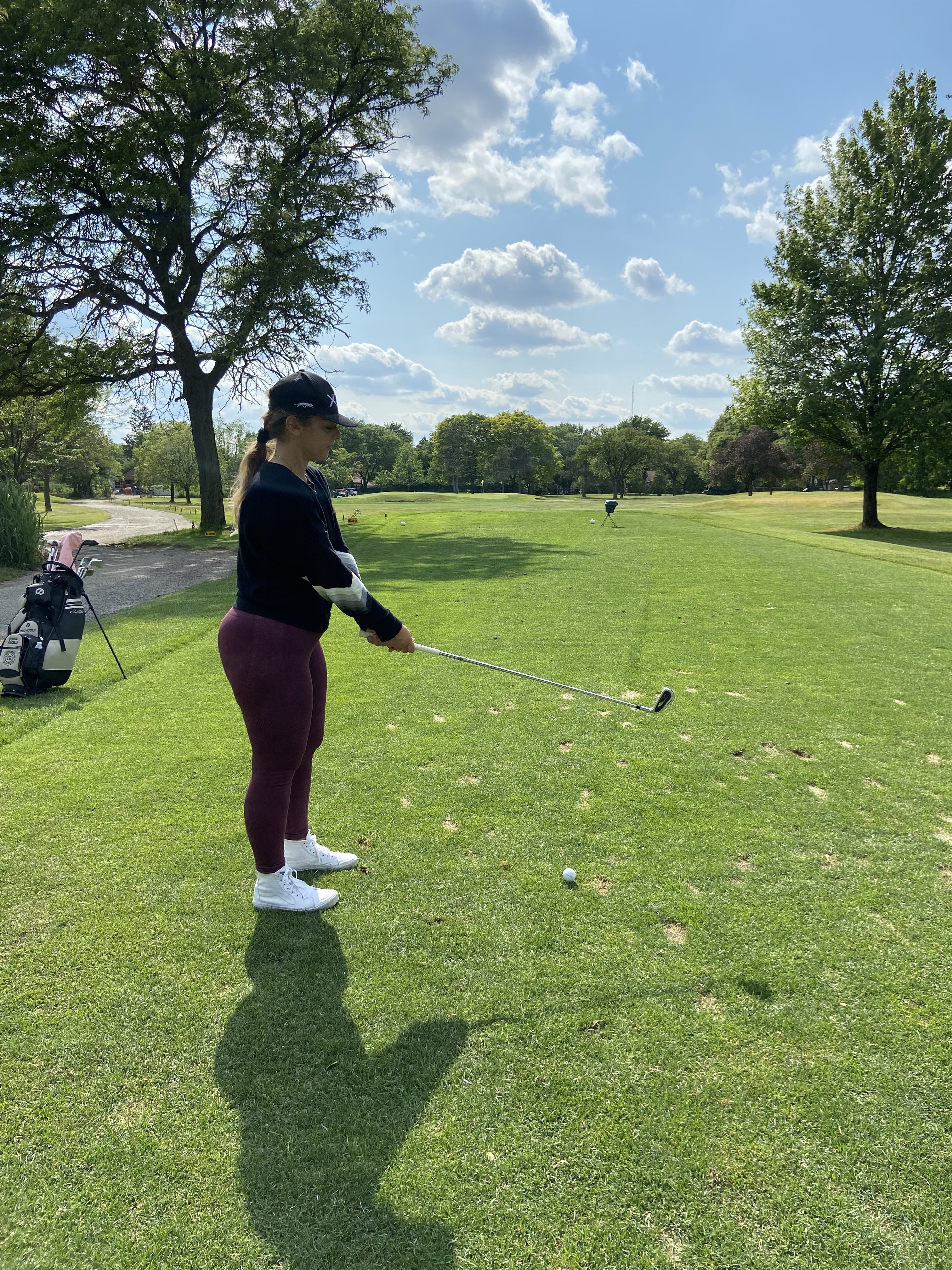

As we bow, the focus is to aim the leading edge perpendicular to the target line. Looking at the first groove of the club (if it is an iron) can help the eyes focus on this step. A lot of mistakes happen when our eyes start looking around while we do this instead of focusing on an intermediate target and using our eyes to line up the leading edge to that point. Being thoughtful in this process is key and just try to make sure the club isn’t wiggling around.
In the bow, with our shoulders just over the toes, we can see if the club is resting in good relationship to the body. Understanding the distance our body should be to the club is huge. This alone can make or break our ability to strike the ball well. Keeping one hand width from our body to the club is a general rule of thumb throughout the entire bag. The space in which we stand to the club shouldn’t change. What changes is the length of the club in our hands.
These components culminate the very first steps we take to hit a shot. This is the essence of set up, which generates our best chances to develop consistent shot patterns to the target. As a result of properly managing these components, we can begin to maintain accuracy and easily repeat our movement patterns to get the ball close to the target. We can also begin to self-correct our misses if we are accountable with these steps.
Foot width and ball position
Lastly, in the set up we step our feet to the ball’s position and generally maintain a stance that is approximately shoulder width. After gripping and bowing the next thing a player needs to do is step to the ball position. This will impact the club’s ability to generate loft, also depending on the chosen club. Generally, a driver ball position is forward in the stance. The mid-iron ball position is mid stance and most full-swing wedges are played just back of center with a more narrow stance. Taking the time to better understand the components of set up and ball position will generate 100 percent of our success to better ball striking.
A final word
Take some videos of yourself and look at the body from head to toe. Is your setup in a ‘Z’ or ‘S’ formation? Where is your weight in your shoes? Heels, mid-shoe, or toes? Does your setup look like an ‘H’or ‘C’? Is your weight too far in the heels or toes? In my experience, it is easier to maintain posture in the golf swing and overall athleticism by keeping the stance’s pressure points more forward in the mid-shoe to the toes. This enhances the pelvic tilt and the arms’ ability to hang. Therefore, posture throughout the swing improves and we are less likely to grip so tight.
Any questions? Book a lesson with LPGA instructor Donna Fiscelli through her booking site.
- LIKE37
- LEGIT8
- WOW2
- LOL1
- IDHT0
- FLOP0
- OB0
- SHANK8
Instruction
Clement: Snap that driver for 300-yard drives!

PGA Tour Coach and Golf Channel Academy instructor, Shawn Clement, shows you how insanely adapt your arm anatomy is to get consistent releases when you allow it to happen in the direction you want the ball to start!
- LIKE4
- LEGIT1
- WOW0
- LOL1
- IDHT0
- FLOP1
- OB1
- SHANK7
-

 19th Hole2 weeks ago
19th Hole2 weeks agoTiger Woods delivered stinging message to major winner after denying him lift on private jet
-
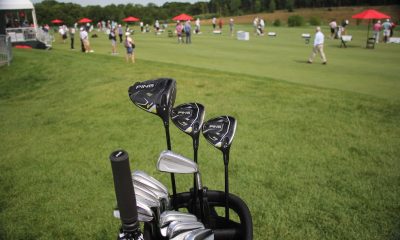
 Whats in the Bag2 weeks ago
Whats in the Bag2 weeks agoSeamus Power WITB 2023 (June)
-

 Whats in the Bag3 weeks ago
Whats in the Bag3 weeks agoOmar Morales WITB 2023 (June)
-

 Whats in the Bag3 weeks ago
Whats in the Bag3 weeks agoBlayne Barber WITB 2023 (June)
-

 Whats in the Bag3 weeks ago
Whats in the Bag3 weeks agoBen Carr WITB 2023 (June)
-
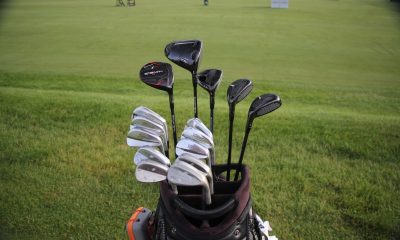
 Whats in the Bag2 weeks ago
Whats in the Bag2 weeks agoTom Hoge WITB 2023 (June)
-

 19th Hole3 weeks ago
19th Hole3 weeks agoJournalist alleges this is the ‘unforgivable’ act Phil Mickelson committed against Pat Perez and his wife
-
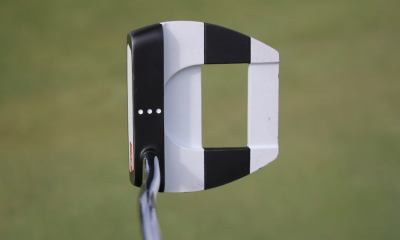
 News2 weeks ago
News2 weeks agoKeegan Bradley’s winning WITB: 2023 Travelers Championship





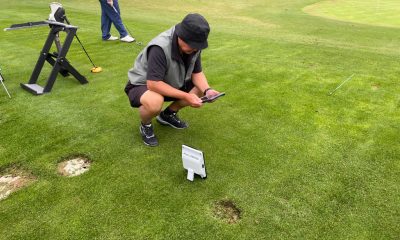

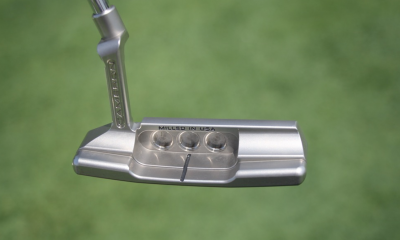

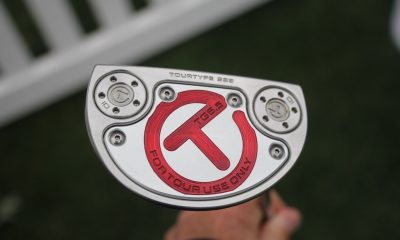

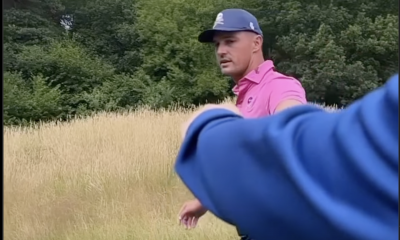

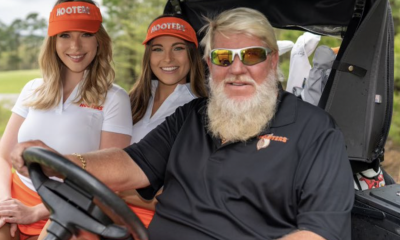











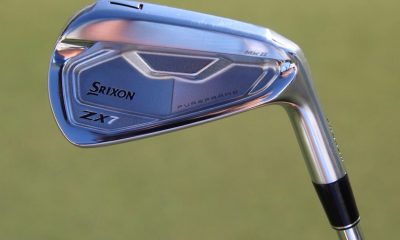

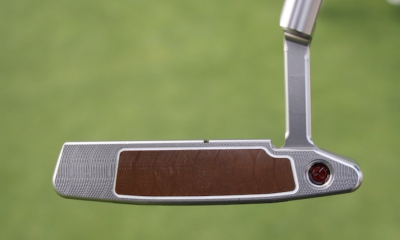

ChipNRun
Apr 1, 2022 at 10:05 am
This discussion reminds me of the 350-yard 18th hole at a course I visit frequently.
It’s a dogleg-right cape hole: A lake guards the right side of the fairway, and then bends around in front of the green. AND, longer hitters can pull one OB to the left.
AND-AND, a prevailing wind comes over the top of the clubhouse which sets 10 feet up behind the green.
Players who take driver end up near the edge of the lake, with maybe a GW left to the green. But, the normally prevailing headwind can knock down the shot into the lake.
Solution: Play a 4W to the center of the fairway, leaving the ball about 140 yards out. Take a 7i, choke down, and hit a smooth shot that stays under of the wind, which licks the clubhouse roof.
It’s trading a sure par for excitement, either the good – or more likely – the bad kind.
geohogan
Mar 30, 2022 at 11:56 am
To play a lower shot, with a given club, what it is we are trying to accomplish it to impact higher grooves on the clubface. The higher the groove the lower the flight.Its all about intent… nothing else.
Simple: intend to impact the ball on the top groove..try it.